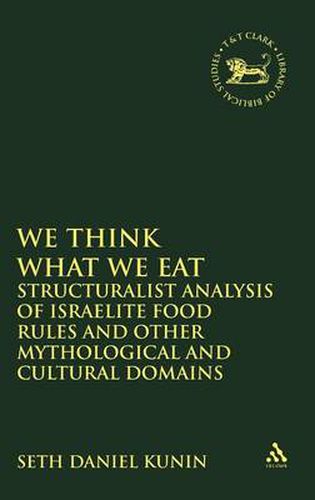Readings Newsletter
Become a Readings Member to make your shopping experience even easier.
Sign in or sign up for free!
You’re not far away from qualifying for FREE standard shipping within Australia
You’ve qualified for FREE standard shipping within Australia
The cart is loading…






In We Think What We Eat, Seth Kunin presents both an appreciation and critique of Professor Mary Douglas’ classical work on Israelite food rules. He places her arguments into the context of related anthropological approaches and suggests a new interpretation of the food rules system based on a rigorous application of structuralist theory.
Kunin then goes on to extend this analysis to other areas of Israelite culture. Through detailed analysis of texts from Genesis, Exodus and Judges, he demonstrates that the same structural pattern found in the first section in respect of ritual is also characteristic of the mythological material. This section of the book also takes up the issue of structural transformation. It examines the processes found as the myths move from the Israelite context to that of the rabbis, the authors of the New Testament and of the Book of Mormon. The arguments presented demonstrate that as the myths move from culture to culture diachronically and geographically while the same mythological elements are retained they are restructured and organized based on the structural needs of the new cultural context.
Kunin is also interested in issues of structuralist theory. Thus, he addresses issues related to the processes of structural transformation - suggesting processes that lead to changes in structural emphasis and those relating to more significant transformations.
This is volume 412 in the Journal for the Study of the Old Testament Supplement series.
$9.00 standard shipping within Australia
FREE standard shipping within Australia for orders over $100.00
Express & International shipping calculated at checkout
In We Think What We Eat, Seth Kunin presents both an appreciation and critique of Professor Mary Douglas’ classical work on Israelite food rules. He places her arguments into the context of related anthropological approaches and suggests a new interpretation of the food rules system based on a rigorous application of structuralist theory.
Kunin then goes on to extend this analysis to other areas of Israelite culture. Through detailed analysis of texts from Genesis, Exodus and Judges, he demonstrates that the same structural pattern found in the first section in respect of ritual is also characteristic of the mythological material. This section of the book also takes up the issue of structural transformation. It examines the processes found as the myths move from the Israelite context to that of the rabbis, the authors of the New Testament and of the Book of Mormon. The arguments presented demonstrate that as the myths move from culture to culture diachronically and geographically while the same mythological elements are retained they are restructured and organized based on the structural needs of the new cultural context.
Kunin is also interested in issues of structuralist theory. Thus, he addresses issues related to the processes of structural transformation - suggesting processes that lead to changes in structural emphasis and those relating to more significant transformations.
This is volume 412 in the Journal for the Study of the Old Testament Supplement series.